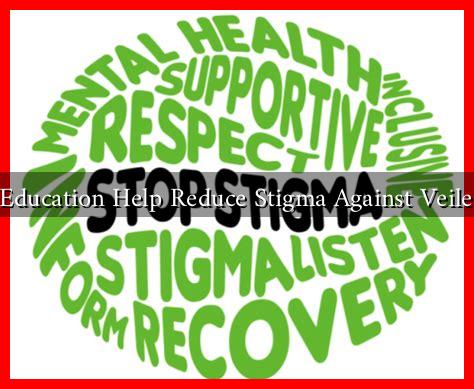-
Table of Contents
How Can Education Help Reduce Stigma Against Veiled Women?
The stigma surrounding veiled women is a complex issue that intertwines cultural, religious, and social dimensions. In many societies, women who choose to wear the veil face discrimination, misunderstanding, and prejudice. Education emerges as a powerful tool to combat this stigma, fostering understanding and acceptance. This article explores how education can play a pivotal role in reducing stigma against veiled women, highlighting the importance of awareness, empathy, and critical thinking.
The Role of Education in Promoting Understanding
Education serves as a foundation for understanding diverse cultures and practices. By incorporating lessons about different religions, customs, and the reasons behind wearing the veil, educational institutions can help dismantle stereotypes. Here are some ways education can promote understanding:
- Curriculum Development: Schools can include modules on cultural diversity, religious practices, and gender studies that address the significance of the veil in various cultures.
- Workshops and Seminars: Organizing events that invite speakers from diverse backgrounds can provide firsthand accounts of the experiences of veiled women.
- Peer Education Programs: Encouraging students to engage in discussions about cultural differences can foster empathy and reduce prejudice.
Encouraging Critical Thinking
Education encourages critical thinking, allowing individuals to question societal norms and stereotypes. By fostering an environment where students can analyze and critique societal attitudes towards veiled women, educational institutions can help reduce stigma. Here are some strategies:
- Debate and Discussion: Facilitating debates on topics related to religious freedom and women’s rights can help students articulate their views and understand opposing perspectives.
- Research Projects: Assigning projects that require students to research the history and significance of the veil can promote a deeper understanding of its cultural context.
- Media Literacy: Teaching students to critically evaluate media representations of veiled women can help them recognize bias and challenge stereotypes.
Case Studies: Successful Educational Initiatives
Several educational initiatives around the world have successfully contributed to reducing stigma against veiled women. Here are a few notable examples:
- The Veil Project (USA): This initiative aims to educate students about the experiences of Muslim women who wear the veil. Through storytelling and personal narratives, the project fosters empathy and understanding.
- Interfaith Dialogue Programs (UK): Schools in the UK have implemented interfaith dialogue programs that bring together students from different religious backgrounds. These programs encourage discussions about faith, identity, and the significance of the veil.
- Global Citizenship Education (UNESCO): UNESCO promotes global citizenship education that emphasizes respect for diversity and human rights. This approach helps students appreciate cultural differences, including the choice to wear the veil.
Statistics Highlighting the Need for Education
Statistics reveal the extent of stigma faced by veiled women and underscore the need for educational interventions:
- According to a 2019 study by the Pew Research Center, 62% of Muslims in Western Europe reported experiencing discrimination due to their religious attire.
- A survey conducted by the Institute for Social Policy and Understanding found that 48% of American Muslims reported feeling uncomfortable in public due to their appearance, including wearing the veil.
- Research from the University of California, Berkeley, indicates that education levels correlate with reduced prejudice; individuals with higher education are less likely to hold negative stereotypes about veiled women.
Conclusion: The Path Forward
Reducing stigma against veiled women requires a multifaceted approach, with education at its core. By promoting understanding, encouraging critical thinking, and implementing successful educational initiatives, society can foster a more inclusive environment. As we move forward, it is essential to recognize that education is not just about imparting knowledge; it is about cultivating empathy, respect, and acceptance. By investing in educational programs that address cultural diversity and challenge stereotypes, we can pave the way for a future where veiled women are embraced as integral members of society.
For further reading on the impact of education on cultural understanding, visit UNESCO’s Global Citizenship Education.


